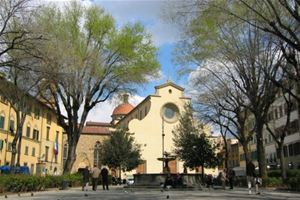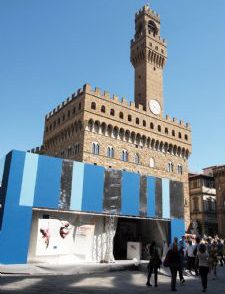Say ‘Tuscany’ and most people think immediately of historic sites, museums, charming towns, wine, and olive oil. But the region is also a superb place for recreational fishing, from fly-fishing in the mountains to sea fishing off the Tuscan coast.
INLAND FISHING
Let’s get one thing straight: while there are many excellent fishing locations in Tuscany, the Arno is not one of them. The river receives a lot of agricultural run-off and untreated sewage, causing massive build-ups of toxic algae and bacteria. This uses up the oxygen in the water, causing fish die-offs. As a result, the quality of fish in the Arno is very low.
The region’s streams and lakes, on the other hand, are great spots for fishing. Although the river Tiber is also quite polluted, at its source in the easternmost area of Tuscany, in the Apennines, it is a super area for fly-fishing, with its shallow, fast-moving and, most importantly, clean waters. Indeed, the Apennines, as a whole, are home to mountain streams and lakes that are well stocked. The Lima, a small river that runs through the province of Pistoia, is a picturesque stream that is great for catching trout and grayling. In recent years the Sieve, a tributary of the Arno, has been converted into a reservoir and is considered one of the better places to fly-fish in Tuscany.
Hooked? Fishing inland waters in Tuscany requires a license, until recently a complicated process. Fishing without a valid licence in Tuscany carries fines between 80 and 480 euro, and the new law that has simplified the process of getting a license (see box) means that anglers, whether residents or visitors, can fish more easily on the right side of the law.
However, the rules that govern inland fishing are complex, and it is important to know what types of fish can be caught where and when. Usually, the legal fishing time runs from one hour before until one hour after sunset. Only certain techniques are allowed (blood chumming and light attractors are banned, as are explosives or electrical fishing). Also, Tuscany’s inland waters carry three different classifications, each with specific regulations. In ‘salmonid’ waters, you can only rod fish with artificial lures, and certain types of live bait are banned. ‘Cyprinid’ areas allow some chumming and the use of up to three rods. River-mouth and brackish waters have the most relaxed rules and no time limits on fishing. Further complicating matters, however, each one of these areas might have additional regulations for a specific zone. These regulations are designed to protect spawning habitats or preserve an area to ensure good stocks for competitions. Thus, it is best to consult with a local guide, especially if you have never fished in Tuscany before.
SEA FISHING
Tuscany’s coasts are also beautiful places to fish, and no licence is needed for recreational sea fishing. If you can rent a boat or charter a trip, the Tuscan Archipelago is an excellent fishing area. Elba is a popular point of origin for fishing trips. Local tour operators often have specialised techniques and equipment that can add to the experience. Trolling with live bait as unusual as squid and cuttlefish is permissible, for instance. The Ligurian and Tyrrhenian Seas are home to incredibly diverse bounties. Bluefin tuna, barracuda, swordfish, sea bass and grouper can be caught at different times during the year.
For those feeling adventurous, there are even more exotic ways to fish off the Tuscan coast. Spearfishing is allowed, but it must be done without any scuba gear or other respirators. Spearfishing is a dangerous sport, however, and doing it while free diving can make it more so. Fortunately, there are a number of local instructors in the sport who can be found online. Underwater net fishing is also allowed, as long as the same rules are respected.
Share your favourite fishing spots:
redazione@theflorentine.net
@theflorentine

GETTING STARTED
Whether for inland or ocean fishing, visitors, new anglers and those new to the area should seek assistance from local bait shops or guides. Local anglers will know the best spots to fish and the rules that apply. In Florence, call Arci Pesca Fisa at 055/353174 or visit www.scuoladipescafirenze.it (click ‘Dove siamo’). To get a fishing license, inland anglers can go to any post office and simply fill out a form and send a postal payment (bollettino postale) to the Tuscan Region treasury department. Two types of non-commercial licences, Type B and Type C, cover inland fishing in the region of Tuscany. Type B (€35) is valid for a year. Visitors usually get the Type C licence (€10), which is valid for 15 days.







